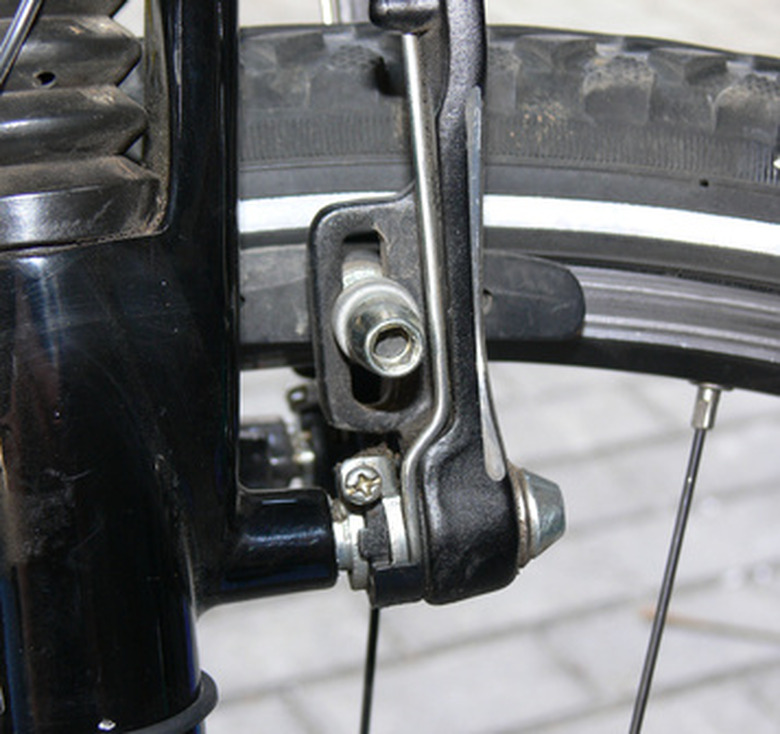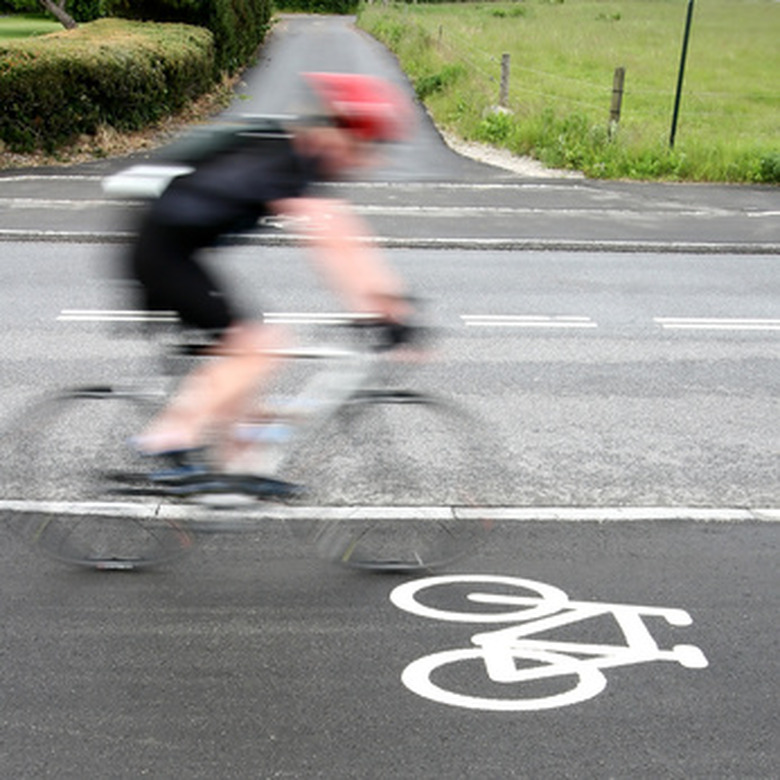How To Calculate Force From Velocity
Things Needed
- Calculator
- Compendium of physics formulas
The first equation taught in dynamics is F= ma which is "force equals mass times acceleration." This equation describes the force that must be exerted on an object of known weight or mass as it is accelerated or decelerated. If a racing bicycle with a rider traveling at 20 miles per hour must stop within a certain distance, you can calculate how much force will be applied to the caliper brake on the rim of the rear wheel. You can also prove that doubling velocity quadruples (squares) the force required to stop.
Step 1
Define the velocity to force application. In this example, the bicycle with its rider weighs 210 pounds. The rider notes a white stop line that is 30 feet in front of him when he applies the brake. Since you already know the velocity, you now have enough information to calculate the required braking force.
Step 2
Solve for time T, which will enable you to calculate acceleration, or in this case, deceleration. The average velocity over the 30 feet is 20 mph divided by two, or 10 mph, which is 14.66-feet-per-second. If the 30 feet are covered at an average speed of 14.66-feet-per-second, then it takes 2.045 seconds to stop.
Step 3
Solve for acceleration using the 2.045 seconds to cover 30 feet. Since the distance calculation is D = v(0) x T +1/2 (a) T^2, the first term can be ignored since all distance covered is accounted for by the deceleration to zero. Therefore, 30 feet equals ½ a xT^2, which is 30 = ½ a x 2.045 ^2 or 30 = 1/2 a x 4.18. Re-arranging, a = 30 x 2/4.18 = 14.35 feet per second/sec.
Step 4
Solve for force using the F=ma basic equation. Force F = 210 x 14.35 feet per second/sec / 32.2 feet per second/sec (acceleration of gravity) or 93.58 pounds of force consistently applied by the brake to the rim for 2.045 seconds to stop the bike. This is probably right at the practical limit of this bicycle's capability to stop.
Step 5
Prove that doubling the velocity quadruples the required force. A 40 mile per hour velocity would result in a stopping time of 1.023 seconds, one-half of 2.045 seconds in the first instance. The D = ½ x a x T^2 term would work out to an acceleration of a = 30 x 2/1.046, or 57.36 feet per second/sec. F = ma would therefore work out to F = 374.08 pounds, very unreasonable for a caliper brake on a skinny racing tire. This foolish rider would never stop from 40 mph in the 30-foot distance, and they would streak right past the stop sign.
TL;DR (Too Long; Didn't Read)
Always remember that stopping force quadruples as velocity doubles.
Warning
Accelerating quickly to a given velocity uses more force and far more fuel than smooth acceleration.
Cite This Article
MLA
Gill, Pauline. "How To Calculate Force From Velocity" sciencing.com, https://www.sciencing.com/how-to-calculate-force-from-velocity-12318069/. 22 September 2017.
APA
Gill, Pauline. (2017, September 22). How To Calculate Force From Velocity. sciencing.com. Retrieved from https://www.sciencing.com/how-to-calculate-force-from-velocity-12318069/
Chicago
Gill, Pauline. How To Calculate Force From Velocity last modified March 24, 2022. https://www.sciencing.com/how-to-calculate-force-from-velocity-12318069/



